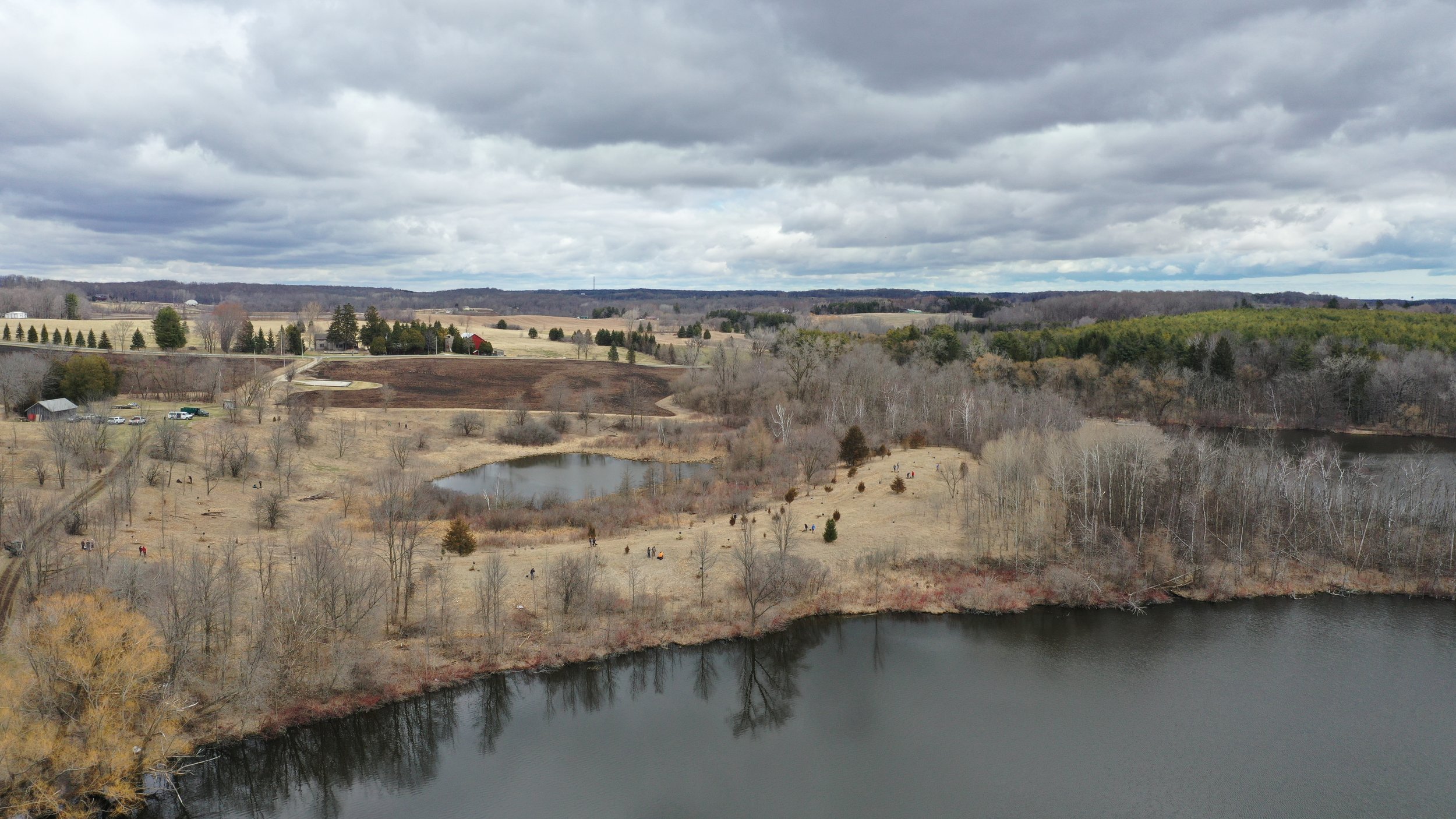Project Update — Gerber Lake Tree Planting
Gerber Lake tree planting site, April 2022.
Explore highlights from an April 2022 tree planting held at Gerber Lake in Sheboygan County in partnership with Glacierland RC&D, Stantec, and Sheboygan Christian School. Photo and video by Nick Musson.
Project Background
Gerber Lake Wildlife Area is a 156-acre property owned by Sheboygan County, located in the north central portion of the county. The property consists of restored prairie, degraded old field, and moderate to high quality communities including mature mesic forest of beech, red oak, basswood, white ash, ironwood, musclewood, and sugar maple; sedge meadow, shrub-carr and tamarack swamp, and three lakes. Past use was primarily agricultural, and in 1996, Sheboygan County purchased a 108-acre portion of the property, and the remaining southern 45-acres in 2001. The lakes are within the headwaters of Otter Creek and are key elements of the Sheboygan River Watershed. They also include one of the region’s most productive warm water fisheries, with the principal species being largemouth bass, bluegill, and black crappie. Recreational opportunities such as hunting, canoeing, kayaking, fishing, nature study, birding, hiking, snowshoeing, and snowmobiling are popular within the property. There is a picnic area with facilities located onsite. The goal of this project is to enhance habitat quality for wildlife species by encouraging establishment of native plant species, managing and mitigating impacts from invasive species, and improving habitat quality.
Management techniques such as prescribed fire, removal and control of invasive species, and planting native trees, shrubs, and herbs are needed to maintain and enhance ecological health. Establishment of diverse native vegetation and year-round cover on this Property will result in increased foraging and nesting habitat for native wildlife species. Perennial cover of native forbs and grasses will be beneficial for a variety of wildlife species, such as pollinators, ground-dwelling mammals, and grassland birds. Tree plantings to mitigate for the loss of canopy cover due to Emerald Ash Borer (EAB) impacts will benefit a number of wildlife and migratory bird species within and adjacent to the planting units.
Restoration Goals
Perform invasive species control, plant native tree and shrubs to enhance habitat, increase native species diversity, and manage established remnant communities.
Increase the availability of high-quality grassland and forested habitats for migratory songbirds and upland game birds.
Replace/remove ash affected by EAB.
Create a diverse, nectar-rich herbaceous habitat to support declining populations of pollinators.
Protect watershed values through promoting infiltration of surface water, stabilizing soils, and improving water quality for downstream wetlands.
Increase hunting, trapping, hiking, boating, wildlife viewing, and other outdoor recreation opportunities.
Related Links (Spring Newsletter):
Message from the Executive Director — Spring 2022
Project Update — Coastal Resiliency Community Impact Project
Project Update — Emerald Ash Borer Response & Community Forestry Restoration
Welcome LNRP’s Newest Board Directors
Call for Nominations: Lake Michigan Champions of Conservation

